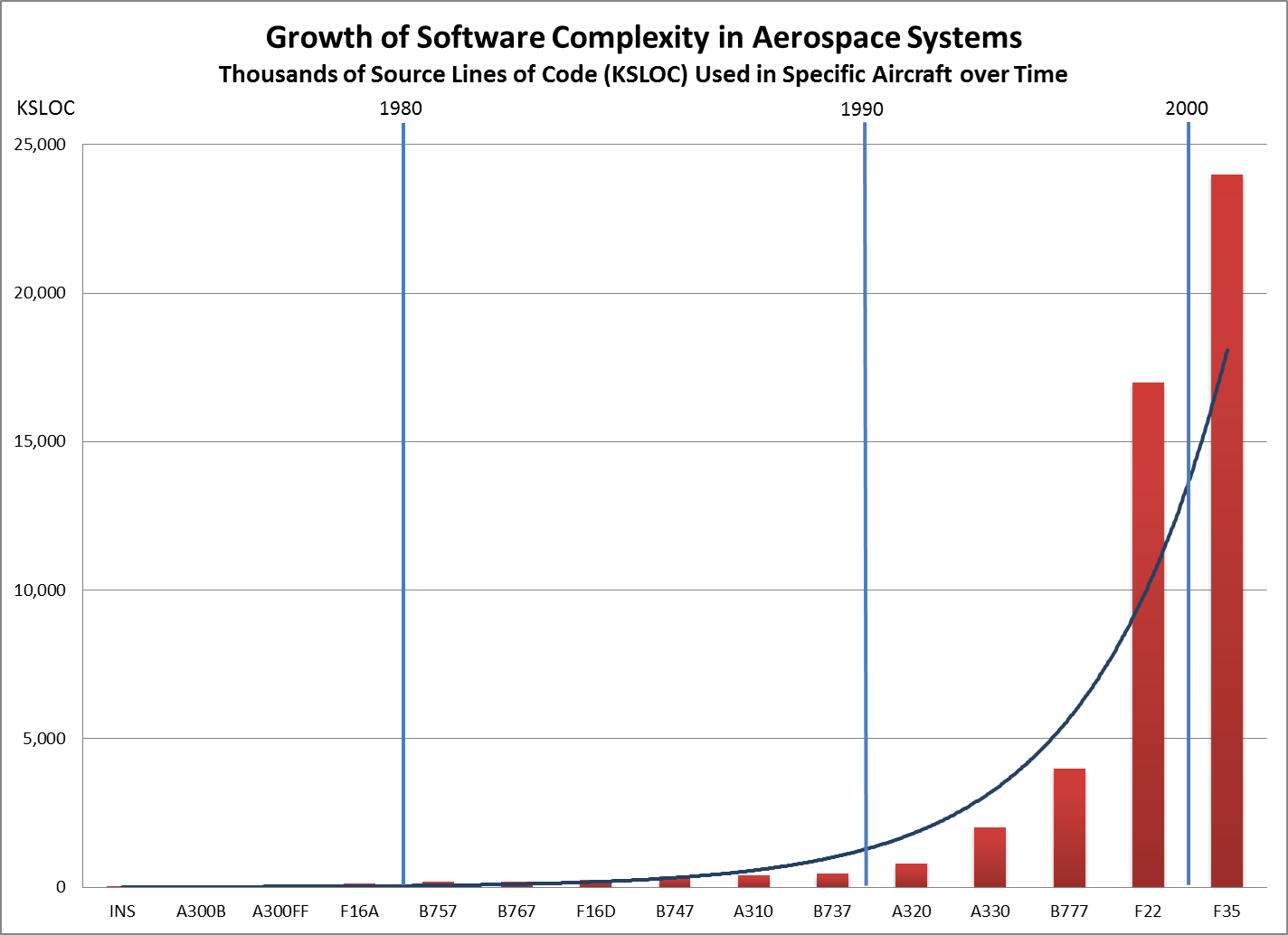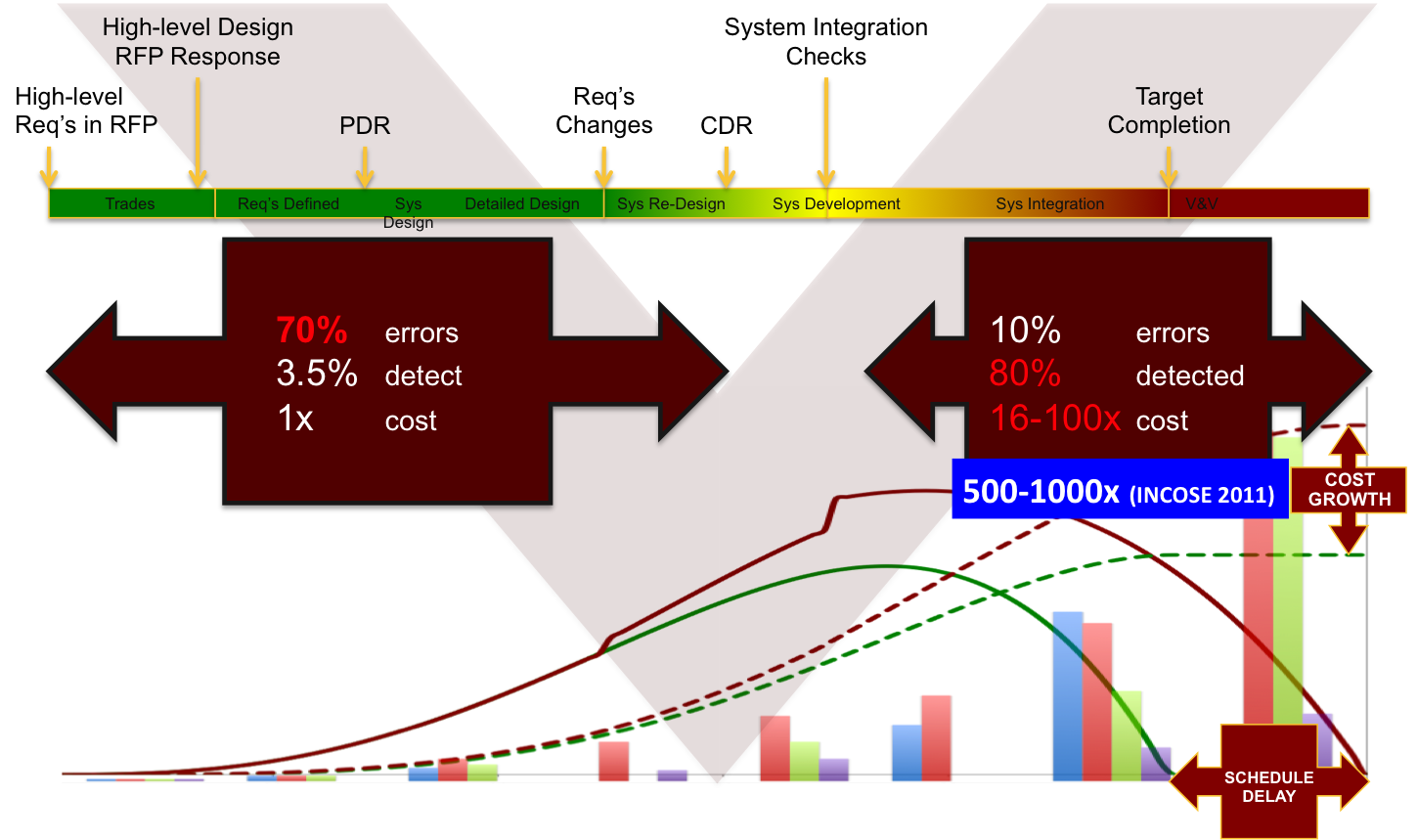Complexity of modern airplanes is increasing exponentially.
- Cost of development increases exponentially with complexity.
- Potential for introducing errors early in the development cycle increases with complexity.
- Correcting errors late in the development cycle is more costly than correcting errors found early in the development cycle.
These factors motivated development of the SAVI program to manage Aerospace system complexity.
Complexity growth
Each generation of aerospace systems faces an enormous demand for improved functionality. Meeting such demand requires a level of complexity exceeding comprehension. In response, system developers increasingly rely on modeling to analyze system behavior and to abstract details of system design into a comprehensible form.
System functionality is progressively being implemented in software to the point that source lines of code (SLOC) in aircraft are doubling about every four years. That trend has been in place for at least five decades and applies to both commercial and to military aircraft.
Development effort and cost for software systems increase exponentially with SLOC. Looking at estimated software development effort for each of the above aircraft shows that effort, and therefore cost, is increasing exponentially at an alarmingly higher rate.
Early error detection
Complexity leads to both requirements errors and requirements churn. These in turn drive cost and schedule overruns.
The costs to detect and correct errors grows exponentially during the system development life cycle.
Most requirements errors are introduced early in development. With existing systems engineering tools and processes, the majority of errors are detected in the integration and test phases. The costs to fix errors detected late in the development lifecycle can be 16 to 100 times the cost of correcting them during the design phase in which they are introduced.
Developers have employed various modeling techniques to reduce complexity to an understandable level. Their techniques have successfully solved problems within given domains, but have not worked well integrating subsystems and models across domains.
An improved approach is necessary.
The SAVI program is providing that vital approach by implementing a cross-domain model-based virtual integration system that manages complexity over the system development cycle.



